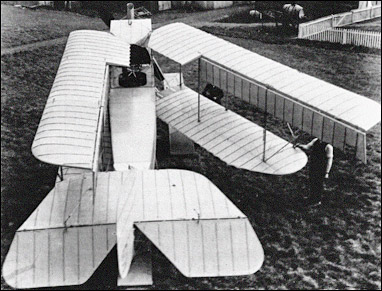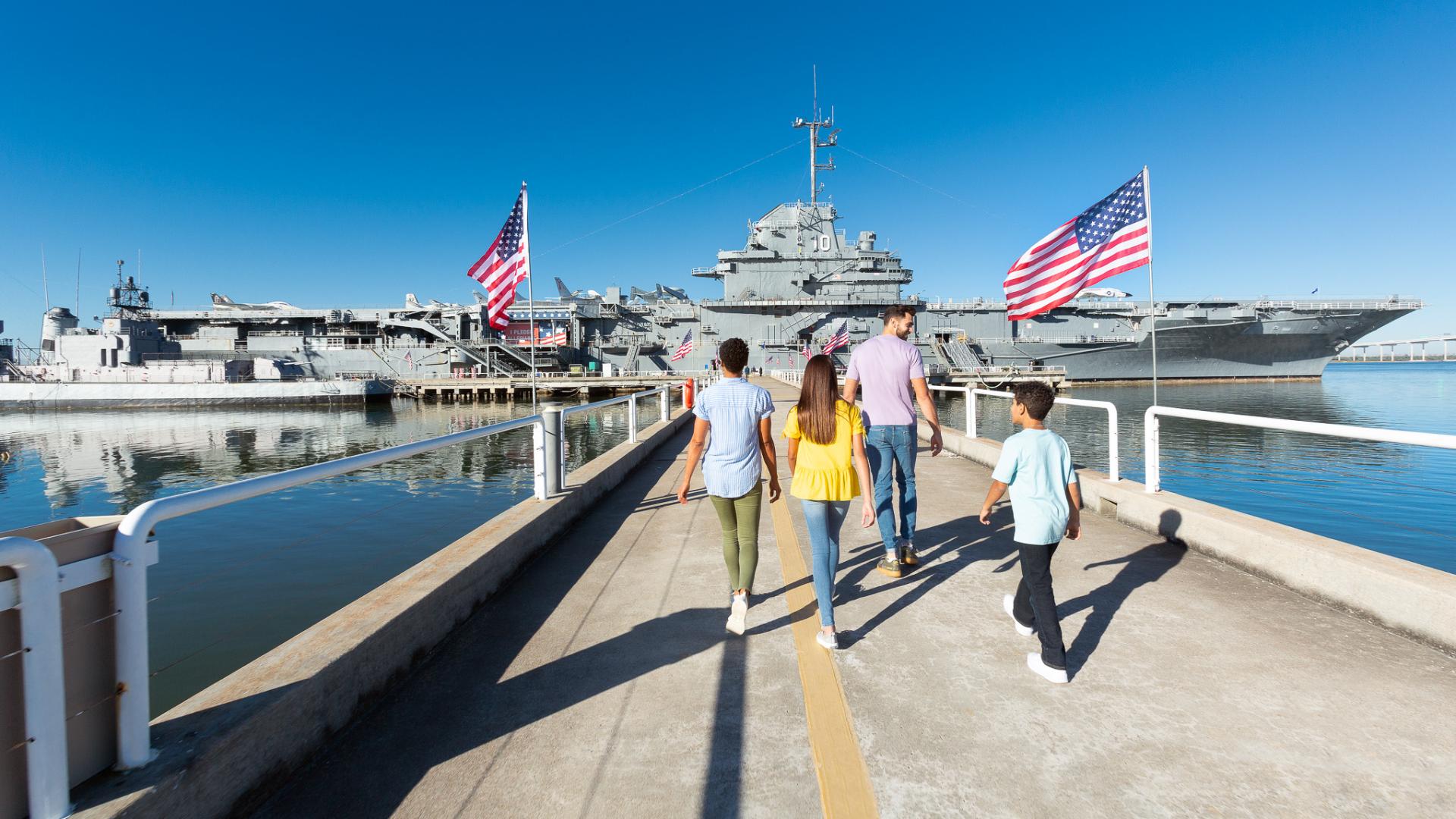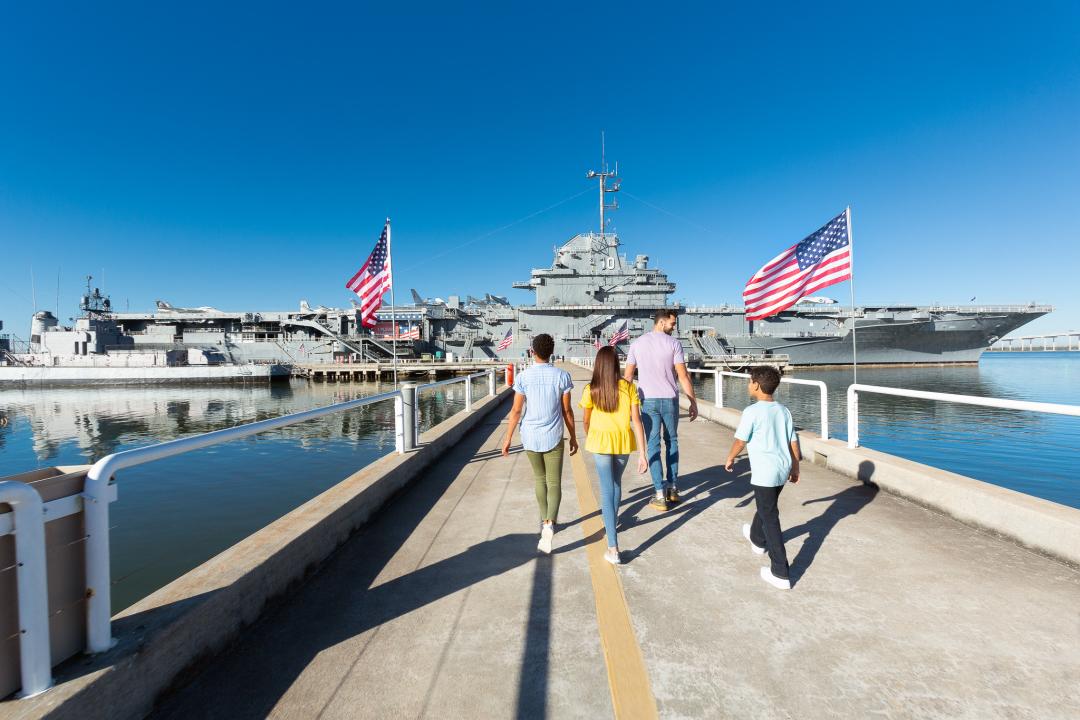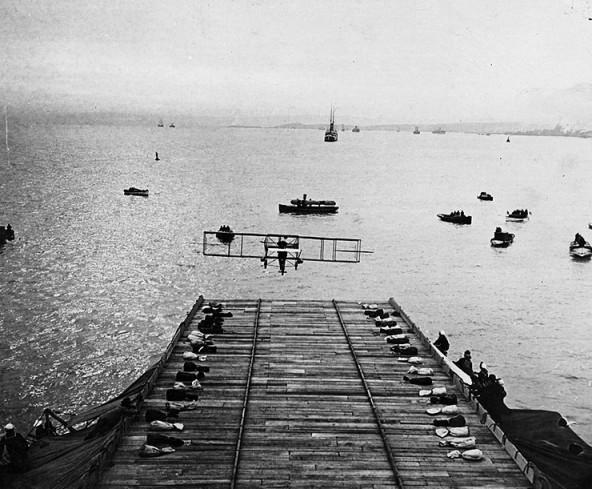
On 18 January 1911, an American, Eugene Ely, successfully landed an aeroplane aboard the USS Pennsylvania anchored in San Francisco Bay.
On this brisk January morning, at 11 AM Ely took off from Tanforan racetrack. USS Pennsylvania was anchored off the San Francisco waterfront and a crowd of spectators ashore, on ships, and small flotilla positioned around the cruiser. Ely was ready for the existing tailwind, but had not anticipated the updraft that struck his light aeroplane just prior to the landing platform. His pilot reflexes saved him as dropped his nose and snagged the arresting gear about halfway up its length. The Curtiss biplane pulled ropes and sandbags to a smooth stop before reaching any of the safety barriers.
The first flight deck was a wood platform 133 feet, 7 inches long (from the mainmast to just over the fantail) and 31 feet, 6 inches wide over the main deck. It was angled upward from the stern and over the after turret and secured to the mainmast. On the ramp of the flight deck, it was angled down 30 degrees over the stern for a length of 14 feet 3 inches (see image below). Bulwarks of 2-inch wood planking were placed up the sides for about 2 feet to prevent the aircraft from going over the side. Parallel guide rails placed 12 feet apart extended the length of the flight deck to confine the aeroplane to the center of the flight deck. The arresting gear consisted of parallel lines of twenty-two pairs of 50-lb sandbags athwart the deck connected by a twenty-one thread line, tightly stretched across the guide rails. The bags were placed 3 feet apart and covered 75 feet of the deck. As a final safety measure, much like today's barricades on our carriers, two canvas screens, 20 feet high and 6 feet apart, were fitted just behind the mainmast.
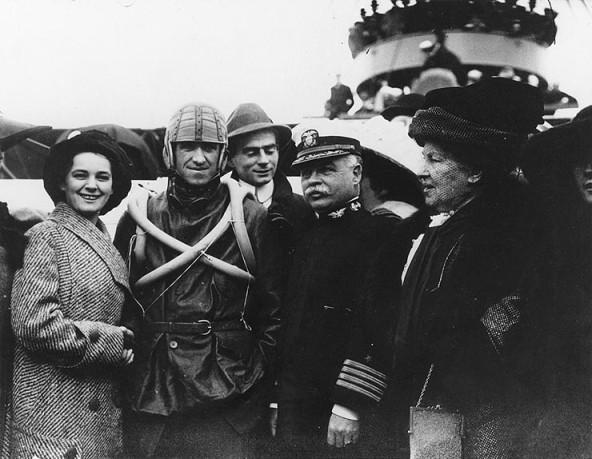
Ely was cheered by hundreds of sailors. The Pennsylvania's skipper, Captain C. F. Pond, proclaimed his feat "the most important landing of a bird since the dove flew back to the ark." (Naval experts could see a new naval future developing and the following day an editorial in The San Francisco Examiner stated unabashedly: "Eugene Ely Revises World's Naval Tactics.")
Mabel Ely greeted him with an enthusiastic "Oh, boy! I knew you could do it". Pennsylvania's Commanding Officer, Captain Charles F. Pond, took the pilot and important guests below for a celebratory lunch. While they dined, the flight deck was cleared and the aeroplane turned around for takeoff. Then the Elys, Pond and the others posed for photographs, seen above. An hour after the world's first shipboard aeroplane landing, pilot Ely made history's second successful takeoff.
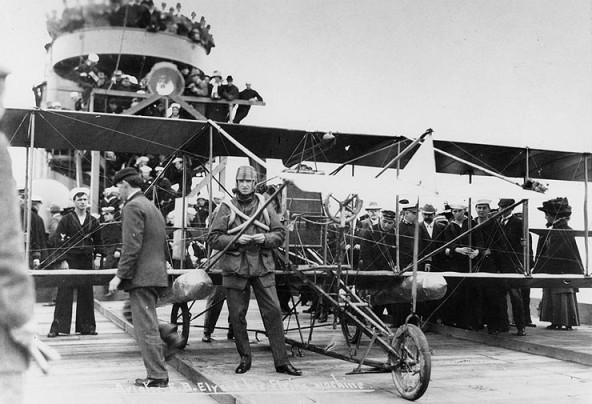

Ely's achievement would spearhead the development of naval air power on the world's oceans. Particularly, his achievement spurred the Royal Navy, which had previously ignored aeroplanes as too flimsy and short ranged at sea. The Royal Navy had rejected an 1907 offer from the Wright Brothers. After Ely's achievement, the Royal Navy would quickly change course and would pass the rest of the world in the development of the first aircraft carriers and aircraft with folding wings.
